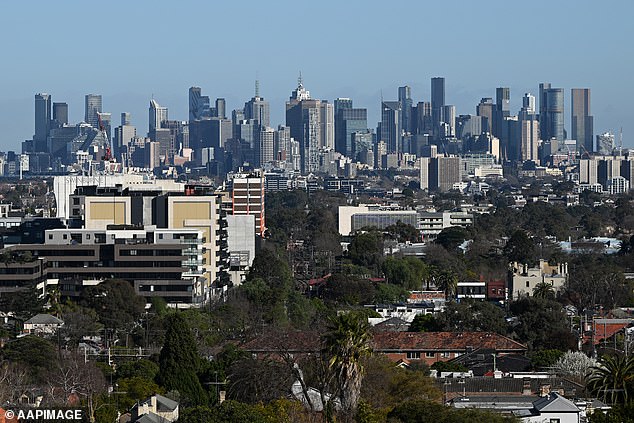Stark warning for Australian mortgage holders hoping for rate cut

Australian homeowners who have been struggling for years under mounting pressure on their mortgages are likely to face more misery, with a leading industry analyst warning that it could be months before any rate cuts come.
Oxford Economics Australia expects the Reserve Bank of Australia to begin cutting rates in the second quarter of 2025, far more than the cut expected by other analysts, including banking giant Commonwealth Bank, in late 2024.
“Given the RBA’s aggressive rhetoric, we do not expect any rate cuts before the second quarter of 2025,” Sean Langcake, head of macroeconomic forecasting at Oxford Economics Australia, said ahead of the research house’s biennial economic outlook.
Mr Langcake said “strong headwinds” in the Australian economy were responsible for the delayed cut as policymakers faced a “challenging” outlook and environment.
“The labour market has experienced a marked slowdown in activity, challenging the RBA’s very patient approach to bringing inflation back to target,” he said.
‘At the same time, a significant easing of fiscal policy will boost the economy, which is welcome for households but less so for inflation-targeters.’
The analyst expects headline inflation to be very close to the upper end of the RBA’s 2-3 percent target by the end of 2024. “But with utility subsidies providing a large part of the disinflationary impulse, the RBA will largely ignore the key data,” Langcake said.
The RBA has implemented an aggressive rate hike cycle since May 2022 to suppress rising inflation in the economy. The key cash rate rose from 0.1 percent to 4.35 percent in November 2023.

Australian homeowners have faced 13 interest rate hikes since May 2022. Pictured is Melbourne’s CBD seen from a new housing development
Interest rates have been on hold since then and RBA Governor Michele Bullock has warned that the board needs to see substantial price changes before any cut can take place.
“Based on what I know now and what the board knows now, we can say that a reduction in the cash rate in the short term is not consistent with the board’s current view,” she said after the board meeting in August.
“We have seen from experience abroad how volatile inflation can be when it declines. We need to ensure that supply and demand are better balanced across the economy.”
These combined increases mean homeowners are paying hundreds of dollars more each month on their mortgages.
Recent data from RateCity shows that repayments on a $500,000 30-year mortgage were $3,105 per month in the June 2024 quarter, compared to $1,989 in the March 2022 quarter, when increases began. That’s an increase of $1,116 per month.
The value of mortgages 30 to 89 days past due is also increasing, now standing at $14.9 billion, according to APRA Quarterly ADI Property Exposure data for the June 2024 quarter.

New date shows repayments on a $500,000 30-year mortgage are $3,105 per month for the June 2024 quarter. Pictured is an open home inspection in Sydney’s inner west
As of March 2022, its value was $5.9 billion.
“Some Australians with mortgages are struggling to keep up with repayments as more households fall into arrears,” said Laine Gordon, finance editor at RateCity.com.au.
‘Despite record-high bank savings levels, some families are drawing on their savings to help meet rising living costs.
‘These are worrying signals for borrowers, but let’s not throw the baby out with the bathwater.
‘Non-performing loans represented only 1.03 percent of all outstanding loans in the June 2024 quarter. This is a slight increase from 0.91 percent in the pre-Covid year.’

RBA Governor Michele Bullock has warned that the board needs to see material price changes before making any cuts.
Australia’s battle against inflation stands in contrast to other countries moving towards austerity.
The US Federal Reserve is widely expected to cut interest rates in the world’s largest economy this week.
Commonwealth Bank maintained its forecast of a cut by the end of 2024 in its latest report on household spending.
“We continue to believe that weaker economic data, further declines in inflation and monetary policy easing at many other major central banks will see the RBA cut interest rates later in 2024, although there is a risk that this may not happen until early 2025,” the report said.




